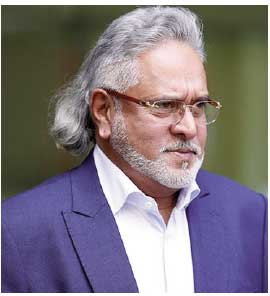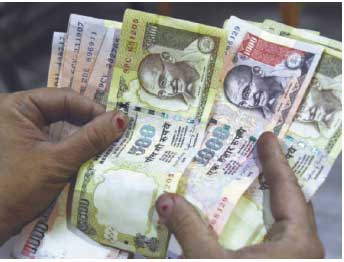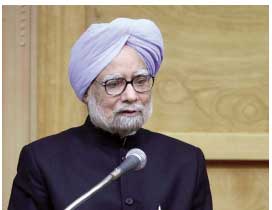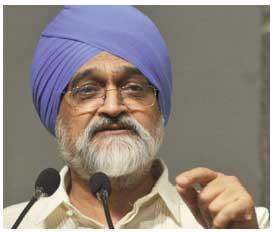
 |
ECONOMIC SCENARIO
Flagging off areas of concern
Little wonder, the government has to be proactive to send signals that it is very much under firm control with the Cabinet approving higher minimum support prices (MSP) for the farmers to mitigate their miseries and other perks for government employees and anganwadi workers with the Prime Minister Modi himself interacting with the latter group of service-providers at the bottom of the pyramid in the retail chain hierarchy.
For once, both the IMF and
the RBI, in a few days gap of
their two reports, dwelt at
length on the Modi
government’s November 8, 2016
polemical decision to
demonetize high
denominational notes. The
abrupt ban on five hundred and
one thousand rupee notes
played havoc with the vast
informal cash-dependent
segments like agriculture and
unorganized ones. But sagacious politicians with admirable domain knowledge on economics, such as former Prime Minister Manmohan Singh, lambasted the move as “organized loot and legalized plunder” and warned that it could cut the country’s gross domestic product (GDP) growth by a massive two percentage point.
Rightly did M.S. Ahluwalia draw attention to another disquieting trend. It is the distinct decline in the fixed investment by the household sector from 15.7 per cent of GDP in 2011-12 to 9.1 per cent in 2016-17. A steep drop of 6.6 percentage points of GDP for this category of investments suggests that farmers and small industry confront attenuated growth prospects. As this is also the sector that is most likely to set off non-agricultural employment, there is ample reason for concern and vexation, the former Plan panel deputy chief cautioned. Losing two percentage points of GDP growth at a time when the country’s youthful population is hoping for a distinct improvement in terms of living levels and employment opportunities smacks of peremptory political spunk on the part of the BJP governmentled NDA coalition. Any effort to sanitize this lethal strike on ordinary people with little means is but an outright and egregious folly that is bound to haunt and taunt the ruling dispensation, analysts wryly say. Former Deputy Chairman of the demolished Planning Commission and a reputed economist Montek Singh Ahluwalia sees worrying signs in the economy. He has cited data to show that the fixed investment rate, which had reached an acme of 36.7 per cent of GDP in 2007-08, the fourth year of the UPA-I, has been falling since then and this decline continued after the change of government in 2014. It has bottomed out at 28.5 per cent since 2015-16, but with this rate of investment, GDP growth is likely to linger at 7 to 7.5 per cent. RBI too foresees real GDP growth for 2018-19 to increase to 7.4 per cent from 6.7 per cent in the previous year, with risks evenly balanced. Rightly did Ahluwalia draw attention to another disquieting trend. It is the distinct decline in the fixed investment by the household sector from 15.7 per cent of GDP in 2011-12 to 9.1 per cent in 2016-17. A steep drop of 6.6 percentage points of GDP for this category of investments suggests that farmers and small industry confront attenuated growth prospects. As this is also the sector that is most likely to set off non-agricultural employment, there is ample reason for concern and vexation, the former Plan panel deputy chief cautioned. The 2017-17 Annual Report of the RBI released on August 29 has conceded that over 99 per cent of the ₹ 500 and ₹ 1000 that were withdrawn from circulation in November 2016 were returned. After verification and reconciliation, the total value of ₹ 500 and ₹ ,1000 as on November 8, 2016, the day before note ban came into effect, was ₹ 15,417.93 lakh crore. The total value of the notes returned from circulation was ₹ 15,310.73 lakh crore. A tale of two reports, on balance, flags off the areas of concern even as the Indian economy is in the cusp of an inflexion point as the general election is due with its outcome remains the known unknown or replete with uncertainties. Interestingly,the RBI data further shows that the value of banknotes in circulation increased by 37.7% over the year to ₹ 18,037 lakh crore as at end-March 2018. It needs to be reckoned that post demonetization, the RBI expended ₹ 7,965 crore in 2016-17 on printing new ₹ 500 and ₹ 2,000 and other denomination notes, more than double the ₹ 3,421 crore spent in the previous year.In 2017-18 (July 2017 to June 2018), it spent another ₹ 4,912 crore on printing of currency, the report said. Even as the demonetization was hailed as a step that would curb black money, corruption and check counterfeit currency, RBI said, “Counterfeit notes detected in SBNs(specified banknotes) decreased by 59.7 and 59.6 per cent in the denominations of ₹ 500 and ₹ 1,000, respectively.” It noted with concern that “Compared to the previous year, there was an increase of 35 per cent in counterfeit notes detected in the denomination of ₹ 100, while there was a noticeable increase of 154.3 per cent in counterfeit notes detected in the denomination of ₹ 50.” Counterfeit notes detected in the new Rs 500 and Rs 2,000 notes during 2017-18 were 9,892 and 17,929, against 199 and 638 respectively in the previous year, it added. So even as the authorities claim that one of the goals of demonetization was to check counterfeit notes, the crooks are one step ahead of the official minters in releasing their own fake notes and getting them circulated too sans much scrutiny or seizure! The RBI is however quite sanguine about prospects of the domestic economy as “the pace and quality of growth will be anchored by progress on the unfinished agenda of structural reforms in, among others, resolution on banking and corporate financial stress; taxation; agriculture; liberalization of the external interface, especially with foreign direct investment”. A tale of two reports, on balance, flags off the areas of concern even as the Indian economy is in the cusp of an inflexion point as the general election is due with its outcome remains the known unknown or replete with uncertainties. The latter is because if there is a coalition government at the Centre with each major ally salivating to take its own pound of flesh post-election, caring little for the economy or the larger stakeholders! |
|


 G.Srinivasan
G.Srinivasan Vijay Mallaya
Vijay Mallaya Demonetisation
Demonetisation Manmohan Singh
Manmohan Singh Montek Singh Ahluwalia
Montek Singh Ahluwalia